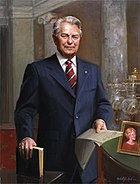United States Senate elections, 1976
|
|
|||||||||||||||||||||||||||||||||||||||||||||||||||||||||||||||||||||||||||
|
|||||||||||||||||||||||||||||||||||||||||||||||||||||||||||||||||||||||||||
|
|||||||||||||||||||||||||||||||||||||||||||||||||||||||||||||||||||||||||||
|
|
|||||||||||||||||||||||||||||||||||||||||||||||||||||||||||||||||||||||||||
|
Democratic gain
Democratic hold
Republican gain
Republican hold
Independent hold
|
|||||||||||||||||||||||||||||||||||||||||||||||||||||||||||||||||||||||||||
|
|||||||||||||||||||||||||||||||||||||||||||||||||||||||||||||||||||||||||||
The United States Senate elections, 1976 was an election for the United States Senate that coincided with Democratic Jimmy Carter's election to the presidency and the United States Bicentennial celebration. Although almost half of the seats being decided in this election changed parties, Carter's narrow victory did not provide coattails for the Democrats, and the balance of the chamber remained the same. This was the first election in which the Libertarian Party competed, running candidates in 9 of the 33 contested seats.
The leaders of both parties retired. Democrats had a net gain of one seat from retirements.
Republicans had a net gain of one seat from re-election gains.
A bolded state name links to an article about that state's election.
...
Wikipedia



